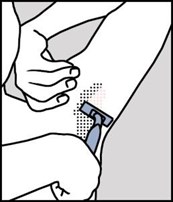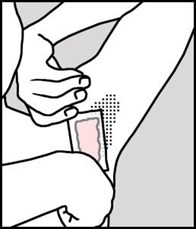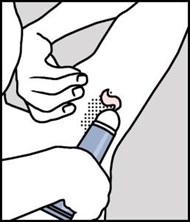Getting under the Underarms

Along with legs, underarms are another area of the body that hair is most commonly removed from. If you decide to remove the hair from your underarms, it’s likely that you’ll want to do so regularly, if not every day, which can unfortunately add further stress to this area, as it’s one of the most sensitive on the body.
There are a number of methods for addressing underarm hair removal, so we’ve taken a look at three of the most common, so you can weigh up which option is the best for you.
 |
SHAVING Shaving is by far the most common form of hair removal. As this form of epilation (removal of the hair above the skin) involves dragging a sharp blade across the area to slice the hairs away as close to the root as possible, it can understandably cause small cuts and abrasions over time, especially if done every day. So although for many this is the most quick and convenient method of hair removal, for people with sensitive skin or thicker hair that requires multiple passes to remove, this isn’t the best option.
|
 |
WAXING Waxing is a form of epilation, which means that it removes hair at the root. This deeper form of removal means that hair takes much longer to grow back; up to four weeks. In the past, waxing was something that would have to be done in a salon, but now there are some great solutions to be able to get these results at home, with both warm and cold waxes. Waxing is only suitable for hairs longer than 2mm, and ideally longer than 5mm, so this solution isn’t perfect for those who like to remain hair-free on a daily basis. |
 |
DEPILATORY CREAMS Depilatory creams dissolve the proteins of the hair just below the skin so it simply breaks away when the cream is washed off. This method can keep you stubble free for up to four days, longer than shaving, and the hair grows back softer over time , so you will notice the new hair growth less. This method can be as easy and convenient as shaving, and you can even do it in the shower. It’s advisable to test the cream on a small patch of skin on another part of your body first, to see how it reacts, before you use it on sensitive areas such as your underarms. |
So as you can see, there are a number of solutions, all with their positives and negatives. It’s best to try a few different ones to discover exactly which method, or combination of methods, is right for you personally.
